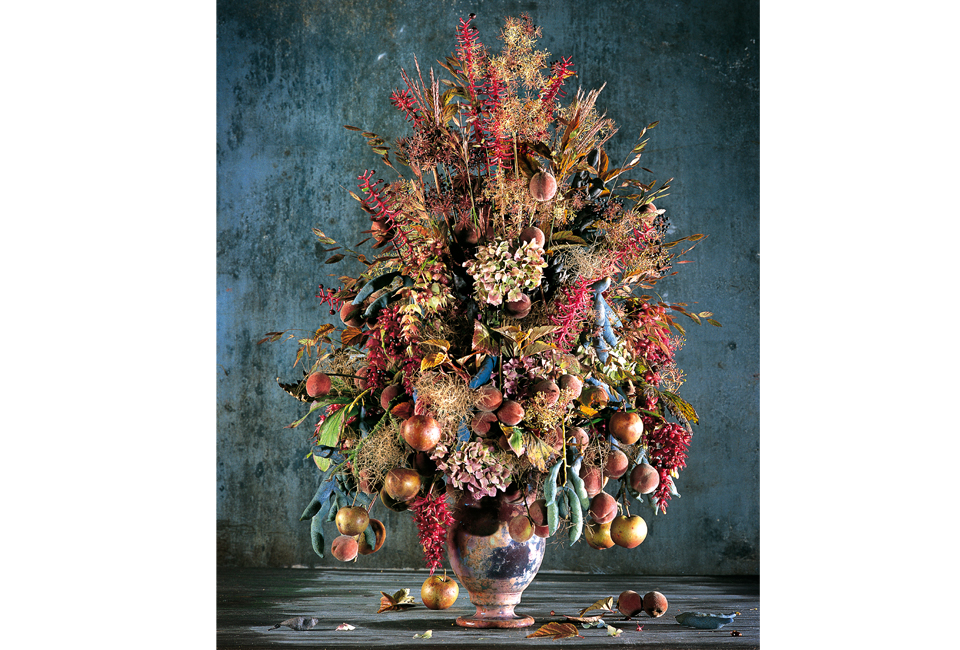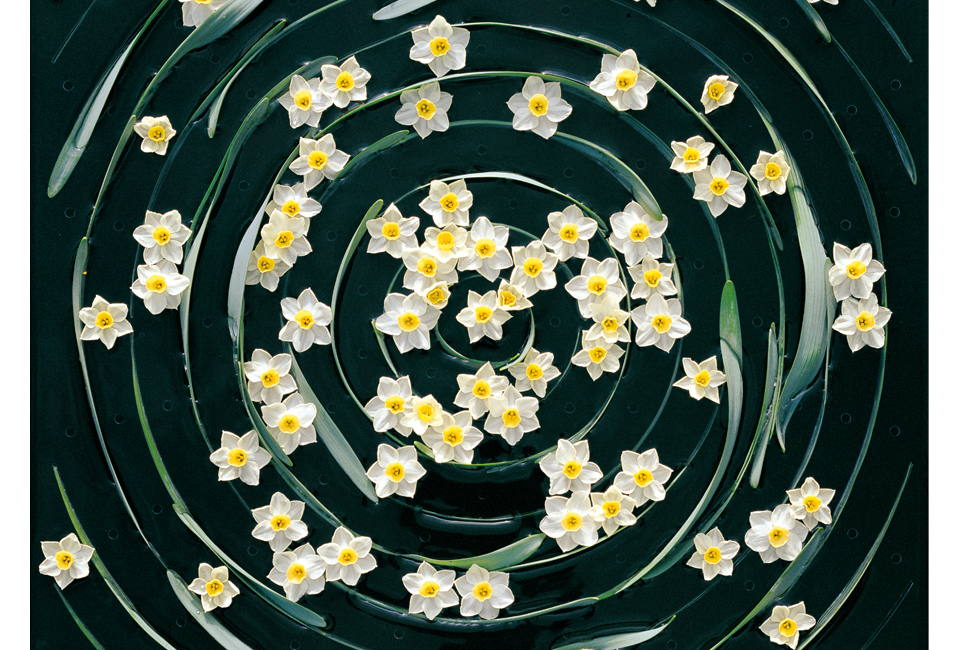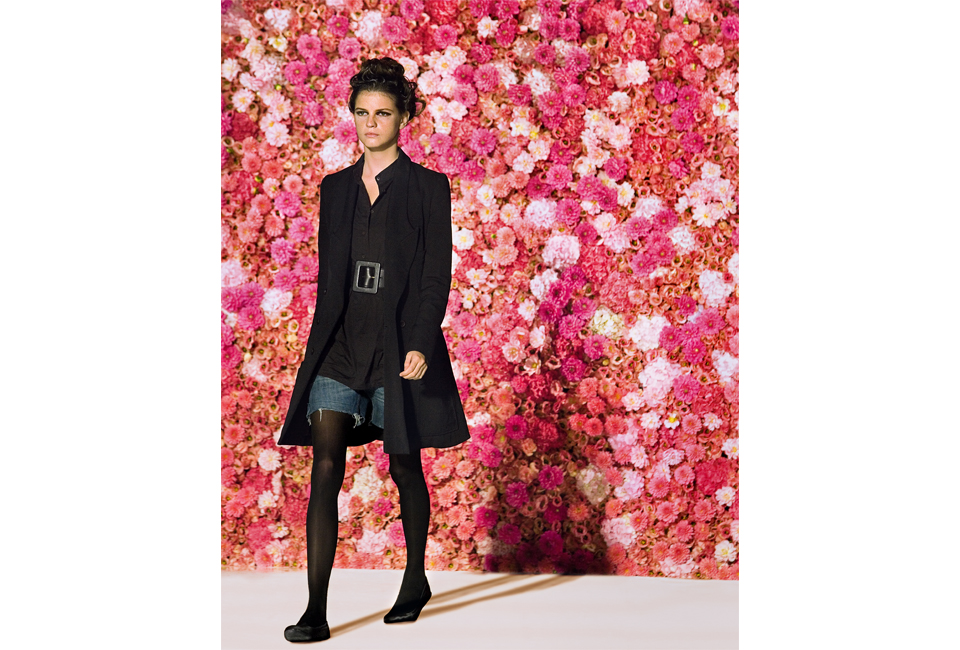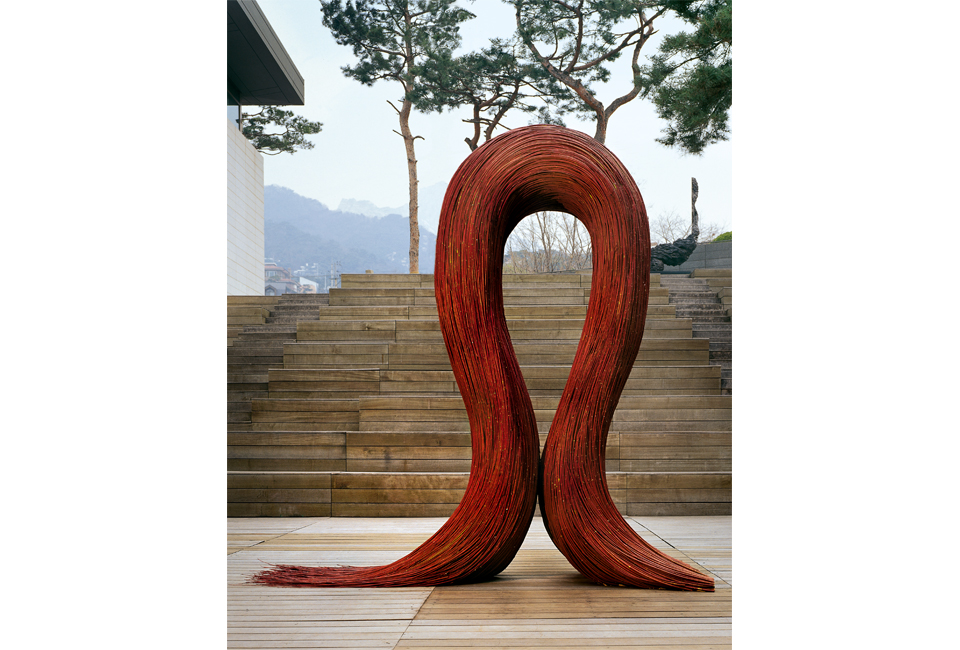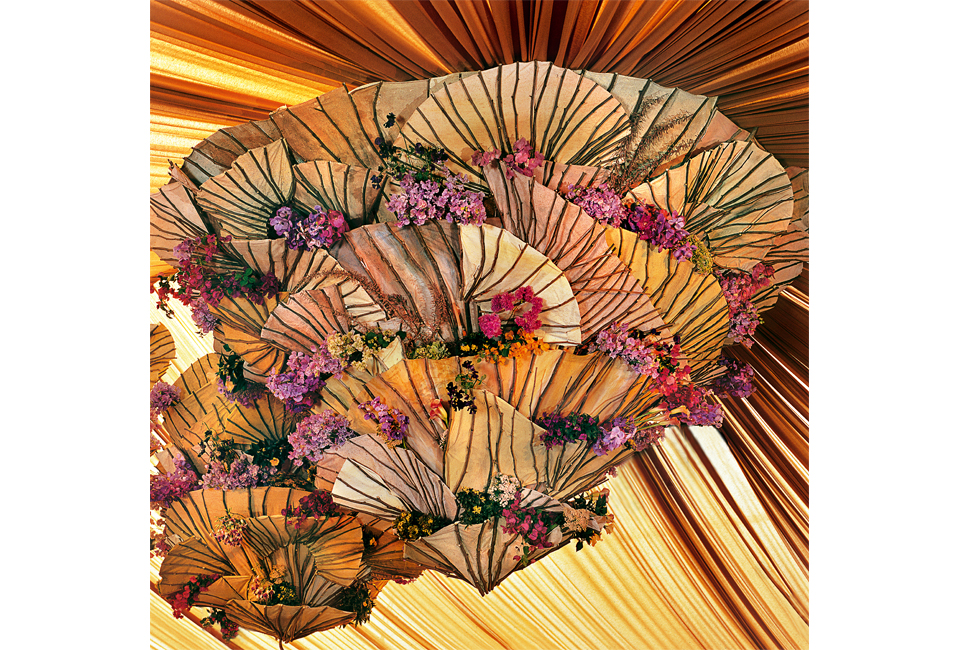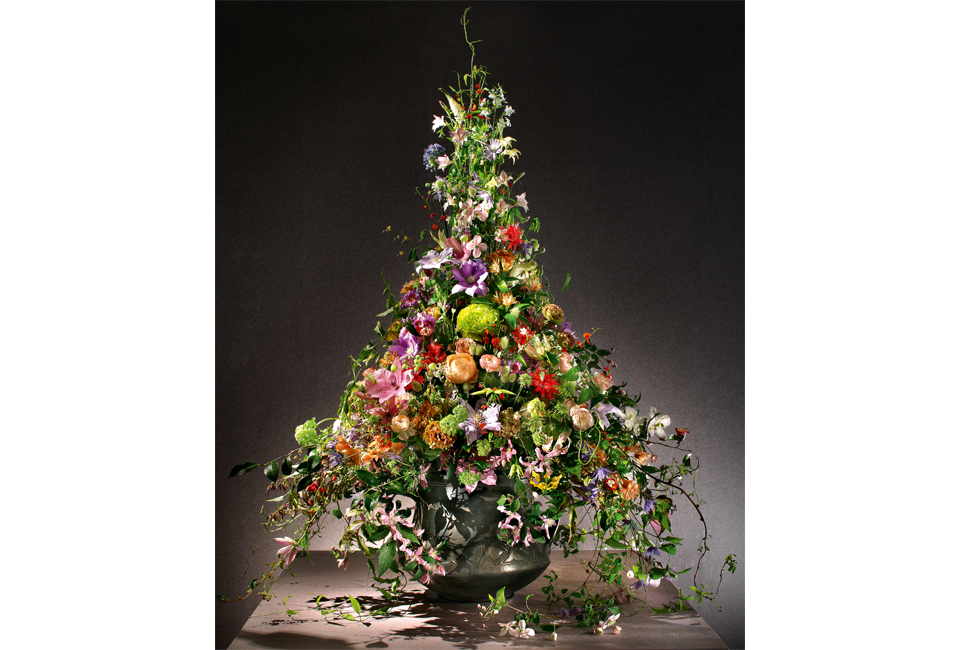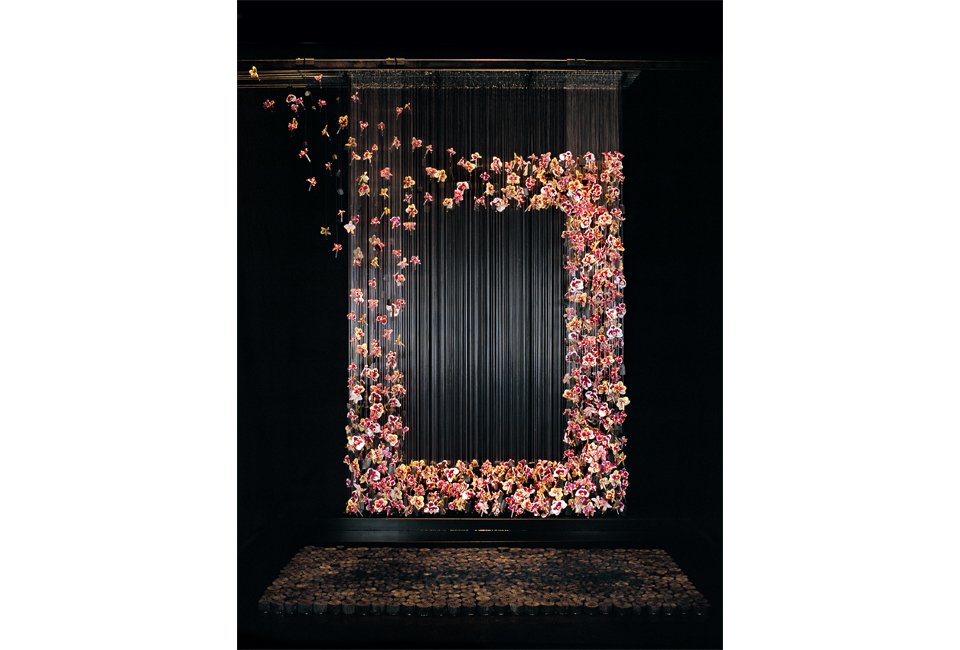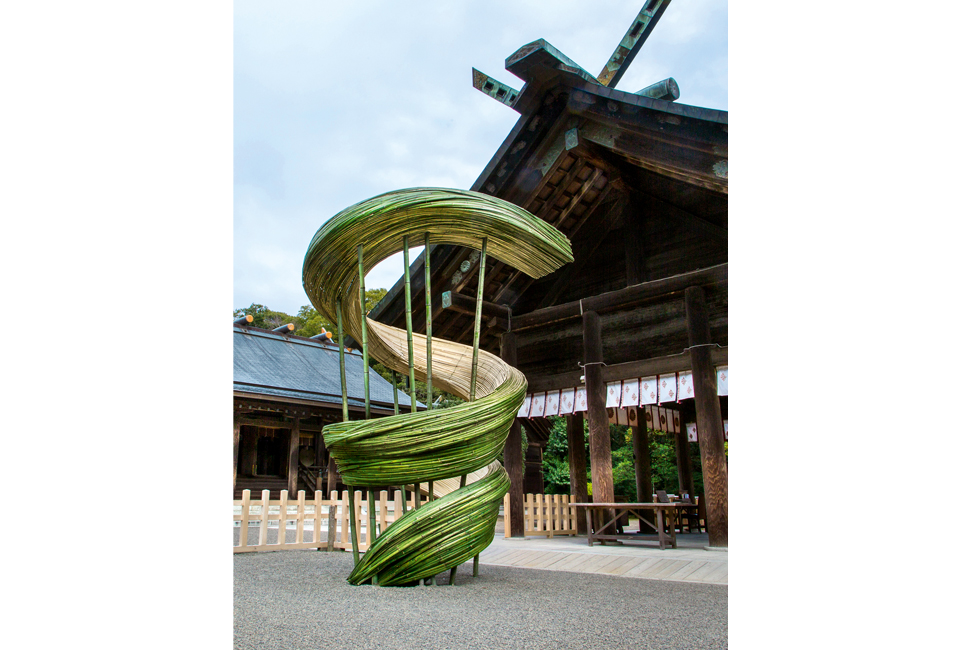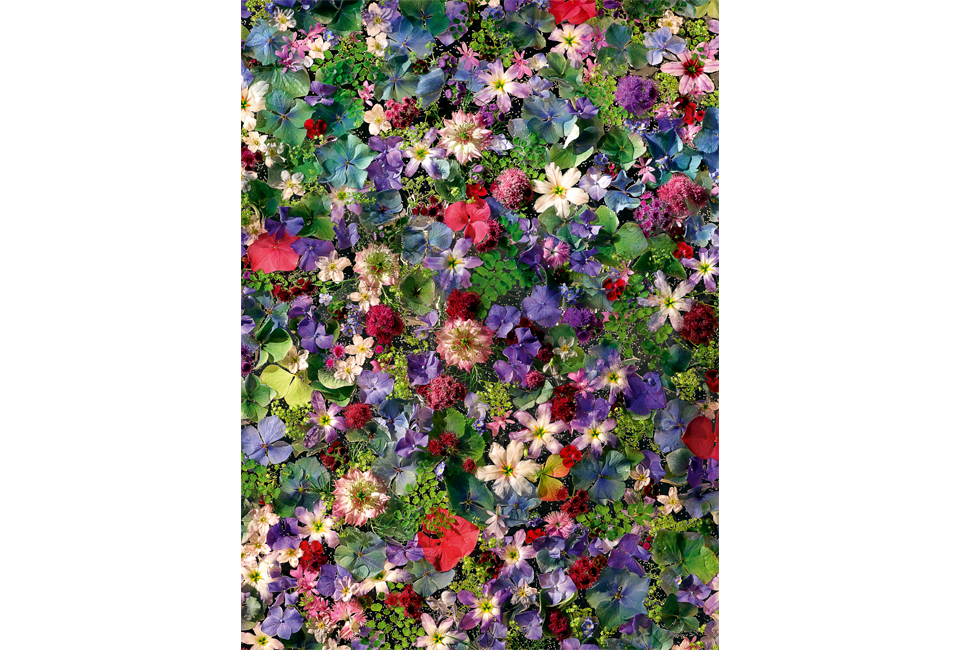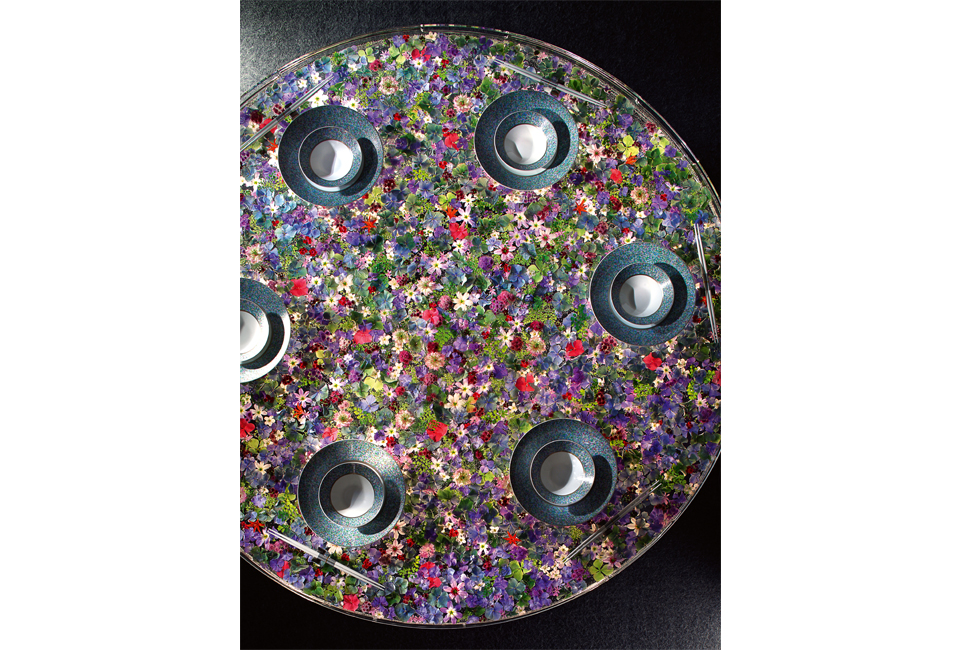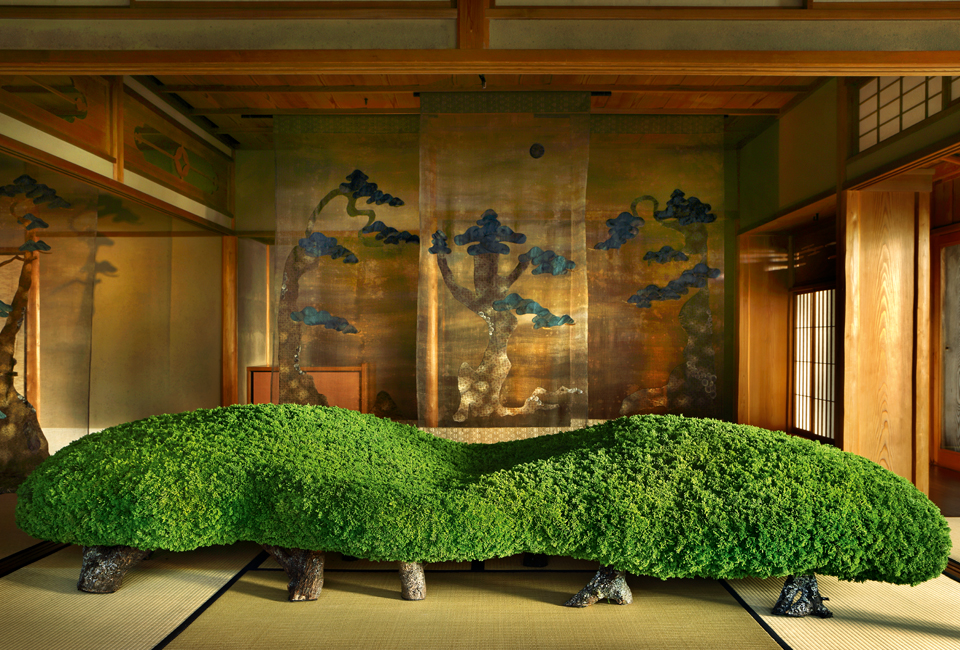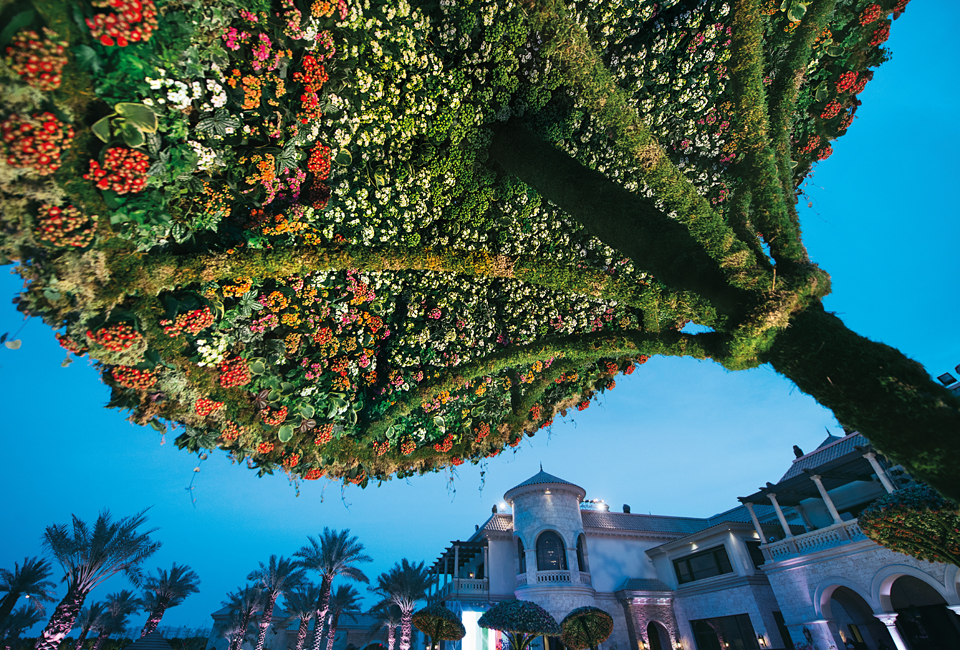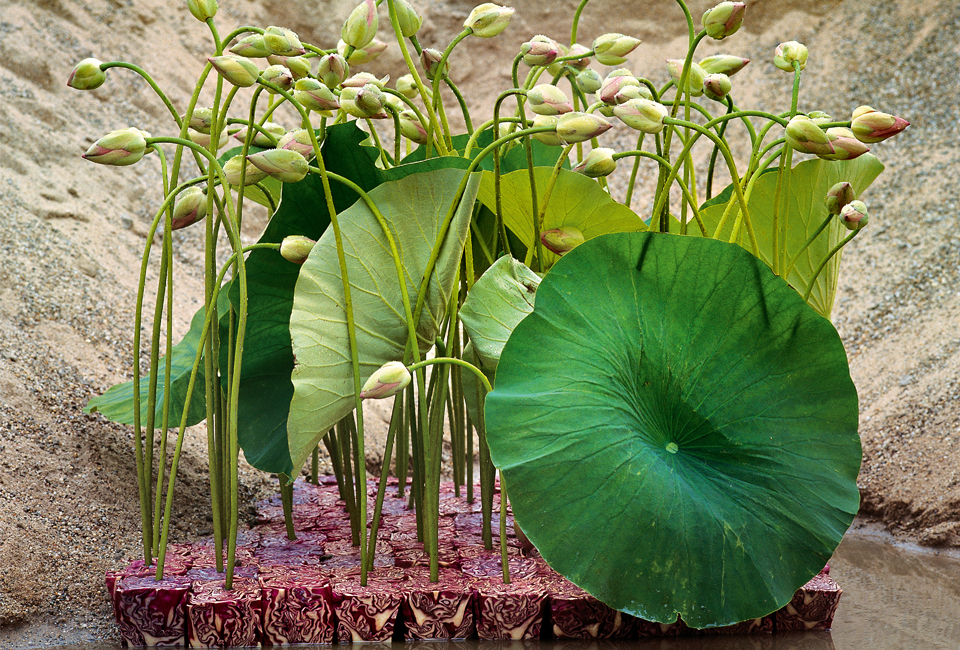Daniel Ost works with flowers, branches, vegetation and plants to create large-scale natural installations, site-specific sculptures and floral decorations. His work bridges the gap between floral design and art. Daniel Ost, published by Phaidon Press, is the first comprehensive monograph to showcase the work of the world’s most renowned floral artist.
The book includes 80 projects, located around the world from royal residencies to rooftop gardens, and ranging from his early experimental work to sculptures that redefine the boundaries of art, design and floral arrangement. Ost fuses Eastern minimalism with Baroque style and influences from Flemish painting. Among his global projects are works for Dries Van Noten, the Venice Biennale, the Museum of Islamic Art in Qatar, and the Izumo Shrine and Toji Temple in Japan.
Ost’s early work is reminiscent of land art, using anything found in nature – seeds and bark, vegetables and moss to create site-specific interventions, transforming a beach into a surreal gallery space with igloos of sand and delicately placed vegetation. Later projects include a gigantic installation for a prince’s wedding in Abu Dhabi made from hundreds of thousands of white roses and peonies, callas lilies and gypsophila and the Laurent Perrier garden on the roof of the Chanel Tower, Tokyo made from pink verbena and curving moss structures in order to create a dialogue between architecture and the organic world.
For international exhibitions Ost has created a lavender river in Belgium, a vast sculpture made of pine needles in Japan and a cactus landscape in Korea. Ost was the first Westerner to be invited to work in the temples of Japan where he created spiritual installations that respond to the formal qualities of the temples’ architecture and to their religious significance.
Each ephemeral project has been documented in the book through photographs and essays that explore the significance and inspiration behind each work.
Texts by Dutch author Cees Nooteboom and Japanese architect Kengo Kuma reflect on the impact of Ost’s career.
Paul Geerts (b.1952) is an independent journalist and consultant who has written extensively on gardening and landscape architecture. Cees Nooteboom (b.1933) is a Dutch novelist, poet, and journalist. He is the recipient of numerous literary awards. Kengo Kuma (b.1954) is an award-winning Japanese architect, known for his innovative use of materials. He is currently a professor at the University of Tokyo’s Graduate School of Architecture.
Daniel Ost by Paul Geerts, with contributions from Cees Nooteboom & Kengo Kuma is published by Phaidon Press















